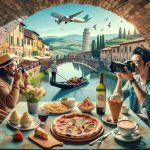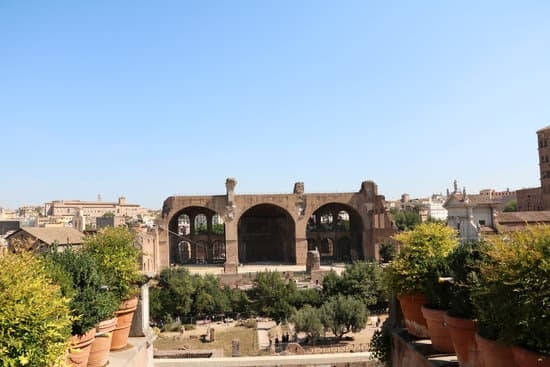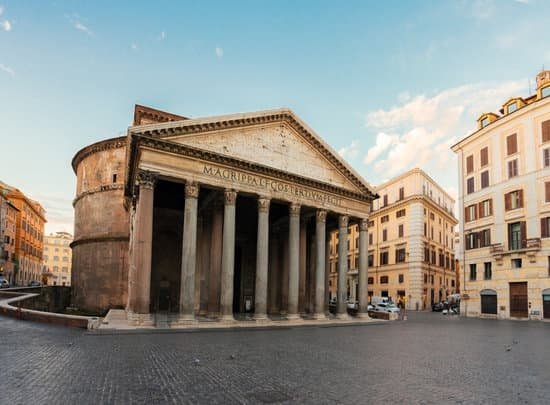Are you planning a trip to Italy and wondering what to expect when traveling in Italy? Look no further. Italy is a must-visit destination for travelers seeking rich history, stunning architecture, delicious cuisine, and diverse landscapes. From the vibrant culture to the iconic landmarks, there is something for everyone in this enchanting country.
Italy’s rich history and heritage make it a top destination for history enthusiasts. The country boasts stunning architecture dating back centuries, from ancient ruins to medieval castles and Renaissance masterpieces. In addition to its historical charm, Italy offers a diverse landscape, ranging from the rolling hills of Tuscany to the dramatic coastline of the Amalfi Coast, making it an ideal destination for nature lovers as well.
The Italian way of life is characterized by passion and vibrancy, with a strong emphasis on family, food, and traditions. From bustling piazzas to intimate trattorias, visitors can immerse themselves in the passionate Italian lifestyle. In this article, we will delve into the cultural nuances that make traveling in Italy a truly unforgettable experience.
The Italian Culture
Italy is known for its passionate lifestyle, and visitors can expect to immerse themselves in this vibrant culture when traveling in the country. Italians are known for their warmth, expressiveness, and strong connections with family and traditions. When visiting Italy, travelers should be prepared to embrace the passionate Italian way of life, which often revolves around food, socializing, and celebrating.
One of the most important aspects of Italian culture is the emphasis on family. Family plays a central role in the lives of Italians, and it is not uncommon to see multiple generations living under one roof. Visitors should expect to witness close-knit family units and an emphasis on spending quality time together. Additionally, Italians place a high value on tradition, with many customs and rituals being passed down through generations.
Food is another essential component of Italian culture, and visitors can look forward to indulging in delicious cuisine that varies from region to region. Mealtime in Italy is a social affair, with friends and family coming together to enjoy long, leisurely meals. When traveling in Italy.
Art has been an integral part of Italy’s cultural heritage since ancient times. Renaissance artists such as Michelangelo, Leonardo da Vinci, Botticelli created some renowned works many displayed throughout Italy’s cities today can experience these masterpieces throughout art galleries and museums spread across the country. Because art has greatly contributed what to expect when traveling in Italy into people’s lives.
Language and Communication
When traveling in Italy, one of the biggest challenges for tourists can be navigating the language barrier. While English is widely spoken in tourist areas and major cities, some knowledge of basic Italian phrases can go a long way in making your trip more enjoyable. It’s important to remember that while many Italians may understand English, they may not be fluent speakers, so being able to communicate in their native language shows respect for their culture.
Learning a few essential phrases such as greetings, asking for directions, ordering food, and expressing gratitude can greatly enhance your travel experience. “Grazie” (thank you), “Per favore” (please), and “Mi scusi” (excuse me) are just a few examples of useful phrases that can help you navigate daily interactions. Additionally, knowing how to ask for help or clarification in Italian can make it easier to communicate with locals who may not speak English fluently.
Aside from language, understanding and respecting Italian cultural customs is also important when traveling in Italy. Italians value politeness and formality in social interactions, so taking the time to learn these customs can help you avoid unintentionally offending anyone during your visit. Overall, being mindful of the language barrier and making an effort to communicate respectfully can lead to more positive and authentic experiences during your travels in Italy.
| Italian Phrase | English Translation |
|---|---|
| Grazie | Thank you |
| Per favore | Please |
| Mi scusi | Excuse me |
Culinary Delights
When traveling in Italy, one of the most exciting and anticipated experiences is indulging in the country’s world-renowned cuisine. Italian food is a celebration of fresh ingredients, regional flavors, and time-honored culinary traditions. Here are some must-try dishes and dining customs to expect when exploring the gastronomic delights of Italy:
- Pasta: Italy is famous for its pasta, with each region offering its own unique varieties and preparations. From the classic spaghetti carbonara in Rome to the hearty lasagna in Bologna, be prepared to savor a wide range of pasta dishes during your visit.
- Pizza: A trip to Italy would not be complete without enjoying authentic Italian pizza. Whether you prefer the thin crust style of Naples or the thick and chewy base of Rome, sampling different types of pizza is a must while traveling in Italy.
- Regional specialties: Each region of Italy boasts its own distinct culinary identity, so be sure to sample local specialties wherever you go. From risotto in Lombardy to seafood along the coastlines, there are endless options to suit every palate.
In addition to the delicious array of dishes, mealtime rituals play an integral role in Italian culture. Dining is a leisurely affair that often involves multiple courses and lively conversation. Italians also take great pride in using high-quality, seasonal ingredients, so expect to enjoy fresh produce, fragrant herbs, and flavorful olive oils during your culinary adventures.
Whether you’re dining at a cozy trattoria or an elegant ristorante, embracing the Italian approach to food and dining is an essential part of immersing yourself in the local culture. Soak up the convivial atmosphere, savor every bite, and don’t be afraid to ask for recommendations or try something new – after all, indulging in Italian cuisine is one of the greatest pleasures when visiting this remarkable country.
As the saying goes: “A tavola non s’invecchia” – At the table with good friends and family you do not become old.
Transportation and Getting Around
Public Transportation
Italy boasts an extensive public transportation system, making it relatively easy for travelers to get around the country without the need for a car. In major cities like Rome, Milan, and Florence, visitors can use buses, trams, and metro lines to navigate urban areas.
Travelers can purchase single tickets or multi-day passes for convenience. It is important to keep in mind that public transportation in smaller towns and rural areas may be less frequent or non-existent, so it’s essential to plan travel routes accordingly.
Renting a Car
For those looking to explore Italy’s countryside and remote regions at their own pace, renting a car is an excellent option. Renting a car allows travelers the freedom to visit charming villages, picturesque vineyards, and scenic coastal roads at their leisure. However, it is crucial to familiarize oneself with Italian traffic laws and parking regulations before hitting the road. Additionally, driving in major cities can be challenging due to heavy traffic and restricted zones.
Traveling Between Popular Tourist Destinations
Italy’s high-speed train network provides an efficient and comfortable means of traveling between popular tourist destinations such as Rome, Venice, Florence, and Naples. These trains offer a convenient alternative to driving or flying between cities.
It is advisable to book train tickets in advance to secure the best fares and ensure availability during peak travel seasons. For those looking for a more scenic route, regional trains meander through Italy’s picturesque landscapes offering a unique perspective on the countryside.
Understanding how to get around Italy is essential knowledge when planning a trip to this beautiful country. Whether relying on public transportation in bustling urban centers or embarking on a road trip through Tuscany’s rolling hills, travelers are sure to find that getting around Italy is an adventure in itself.
Understanding the various options available for navigating Italy’s cities and countryside will help visitors make the most of their time spent exploring all that this captivating country has to offer.
Historical and Cultural Landmarks
Italy is home to some of the most iconic landmarks and historical sites in the world. From ancient ruins to magnificent cathedrals, exploring Italy’s rich heritage is a must for any traveler visiting this beautiful country. Here are some of the top historical and cultural landmarks that you can look forward to when traveling in Italy:
- The Colosseum: A trip to Italy wouldn’t be complete without a visit to the Colosseum in Rome. This ancient amphitheater, built in 70-80 AD, is a symbol of Roman engineering and is one of the most iconic landmarks in Italy.
- Vatican City: Home to St. Peter’s Basilica and the Sistine Chapel, Vatican City is a must-visit for art and history enthusiasts. The intricate frescoes by Michelangelo and other Renaissance masterpieces make it a treasure trove of artistic wonders.
- The Leaning Tower of Pisa: Located in the picturesque city of Pisa, this iconic bell tower is known worldwide for its unintended tilt. Visitors can climb to the top for stunning views and photo opportunities.
Exploring these landmarks will give you an insight into Italy’s rich history and cultural significance. Each site has its own unique story to tell, offering visitors a glimpse into the ancient civilizations and artistic achievements that have shaped Italy into what it is today.
Whether you’re interested in architecture, art, or simply soaking up history, Italy’s historical and cultural landmarks are sure to leave a lasting impression on your travel experience. Be sure to plan your visits accordingly and take advantage of guided tours or audio guides at these sites to gain a deeper understanding of their historical importance.
Weather and Packing Tips
Italy is known for its varied climate, with different regions experiencing different weather patterns throughout the year. When planning a trip to Italy, it’s important to be prepared for the various climates you may encounter. Here’s what to expect when traveling in Italy and some tips for packing accordingly.
Seasonal Weather Patterns
Italy experiences four distinct seasons, with each region having its own unique climate. In the northern part of the country, you can expect colder temperatures during the winter months and warmer temperatures in the summer. The central regions have a more Mediterranean climate with hot, dry summers and mild winters. Southern Italy enjoys a typically Mediterranean climate with hot summers and mild winters as well.
Packing Advice
When preparing for a trip to Italy, it’s essential to pack clothing that suits the seasonal weather of the specific regions you plan to visit. In general, lightweight and breathable clothing is recommended for visiting during the summer months, while warmer clothing and layers are necessary for the winter. It’s also advisable to bring comfortable walking shoes for exploring iconic landmarks and cobblestone streets.
Additional Items to Pack
In addition to clothing appropriate for the weather, there are a few other items worth considering when packing for a trip to Italy. Sunscreen is essential during the summer months, especially if you plan on spending time outdoors.
A travel adapter may also be necessary if you plan on bringing electronic devices from abroad. Lastly, don’t forget essentials such as travel documents, medication (if needed), and a reusable water bottle for staying hydrated while exploring all that Italy has to offer.
By being mindful of Italy’s varied climate and packing accordingly, travelers can ensure they are well-prepared for any weather conditions they may encounter during their visit to this beautiful and diverse country.
Cultural Etiquette
In conclusion, traveling in Italy offers an unforgettable experience filled with rich history, mouthwatering cuisine, and stunning landscapes. Embracing the passionate Italian way of life allows visitors to fully immerse themselves in the vibrant culture and traditions that define this beautiful country. Understanding the importance of family, food, and social customs is key to enjoying a meaningful and respectful interaction with locals.
When visiting Italy, it is essential to familiarize yourself with basic Italian phrases and common cultural customs to navigate the language barrier effectively. Additionally, being mindful of social norms, greeting customs, and proper dining etiquette will go a long way in showing respect for the Italian way of life. By embracing these aspects of Italian culture, travelers can expect warm hospitality and genuine connections with the locals.
As you prepare for your trip to Italy, it’s important to consider seasonal weather patterns and pack accordingly for the varied climates throughout the country. Whether you’re exploring historical landmarks in Rome, indulging in regional cuisine in Tuscany, or soaking up the sun along the Amalfi Coast, being well-prepared for what to expect when traveling in Italy will enhance your overall experience.
With careful planning and an open mind, visitors can look forward to a truly unforgettable journey through one of Europe’s most enchanting destinations.
Frequently Asked Questions
What I Wish I Knew Before Traveling to Italy?
Before traveling to Italy, I wish I knew more about the regional differences in cuisine, customs, and dialects. Each region has its own unique characteristics, and understanding this would have enhanced my experience.
What Do I Need Before Going to Italy?
Before going to Italy, it’s important to have a basic understanding of Italian language, as many locals may not speak English. Additionally, having a good map or navigation app is essential for getting around the country’s winding streets and alleyways.
What Are the Dos and Don Ts in Italy?
In Italy, it’s important to remember to dress modestly when visiting churches or religious sites. Additionally, it’s customary to greet people with “buongiorno” in the morning and “buonasera” in the evening. It’s also important not to order a cappuccino after breakfast, as it’s considered a faux pas in Italy’s coffee culture.

I’m a passionate traveler, writer, and Italophile. My fascination with Italy’s history, art, and culture has led me on countless adventures across the Italian landscape. Through “I Live Italy,” I share my love for this extraordinary country and aims to inspire others to explore its boundless beauty.





